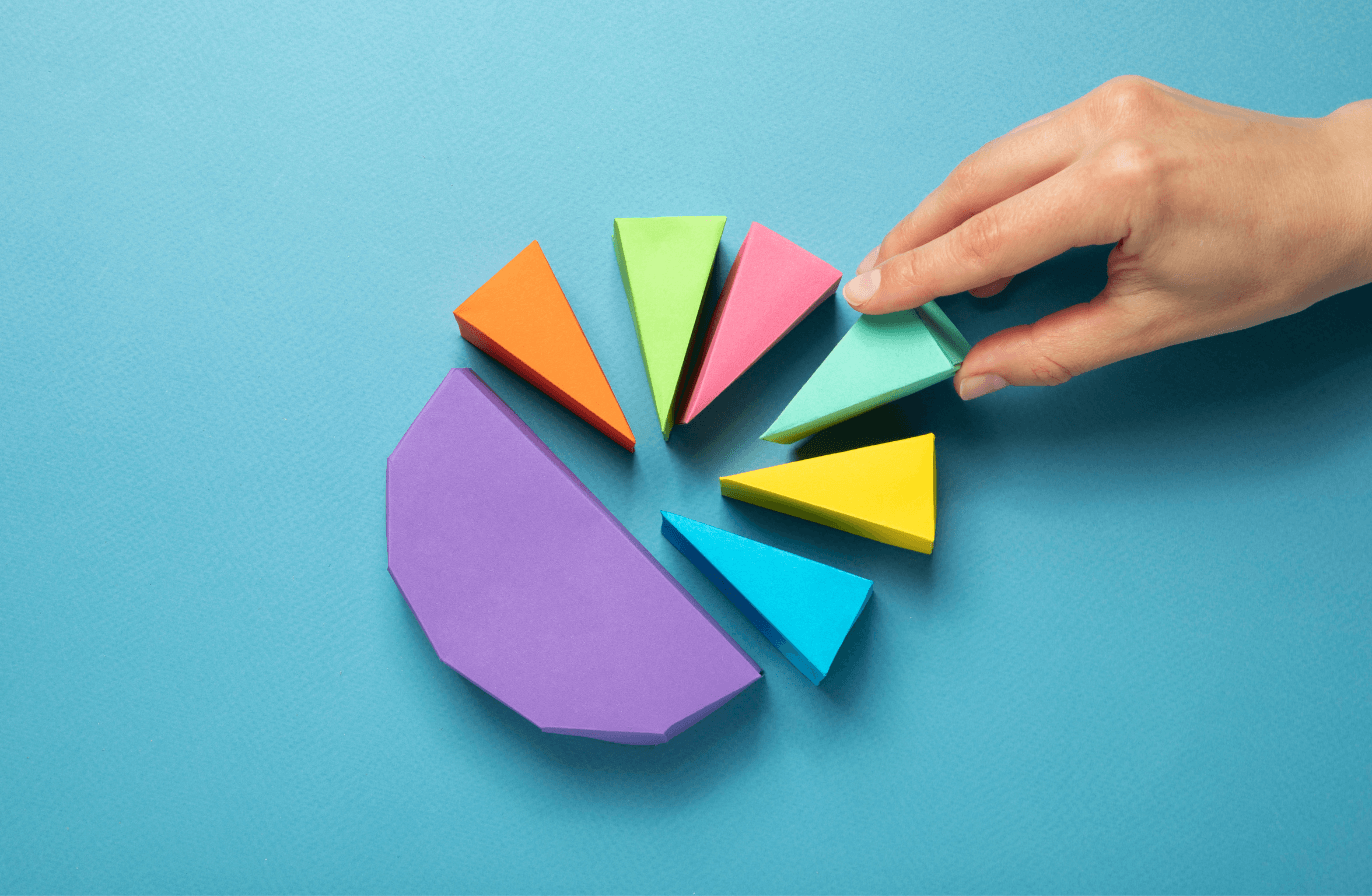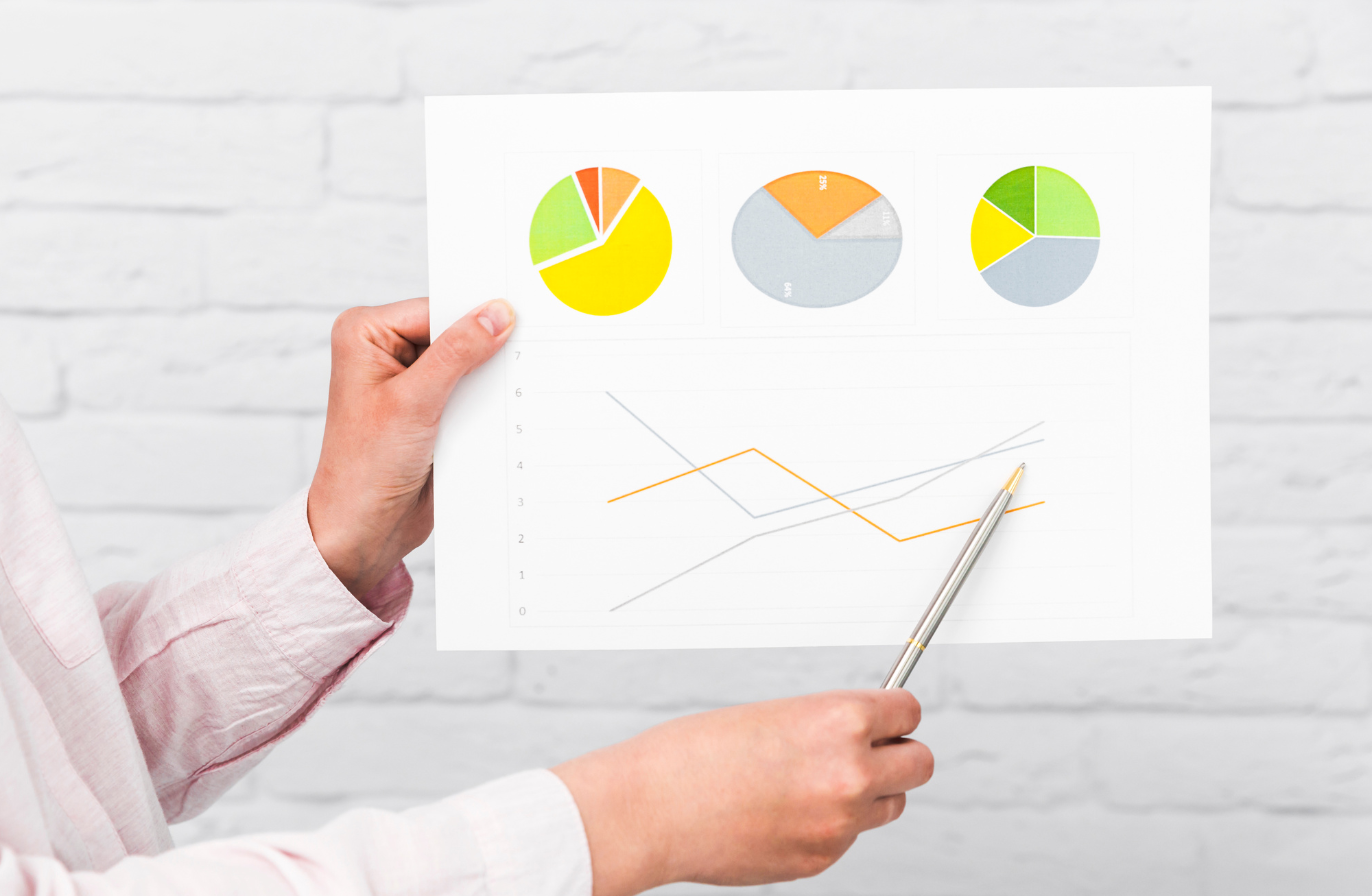How to Use AI in Social Media Analysis: A Guide Based on Experts’ Insights
Discover 8 creative ways to use AI in social media analysis to track trends, understand audiences, and boost performance.
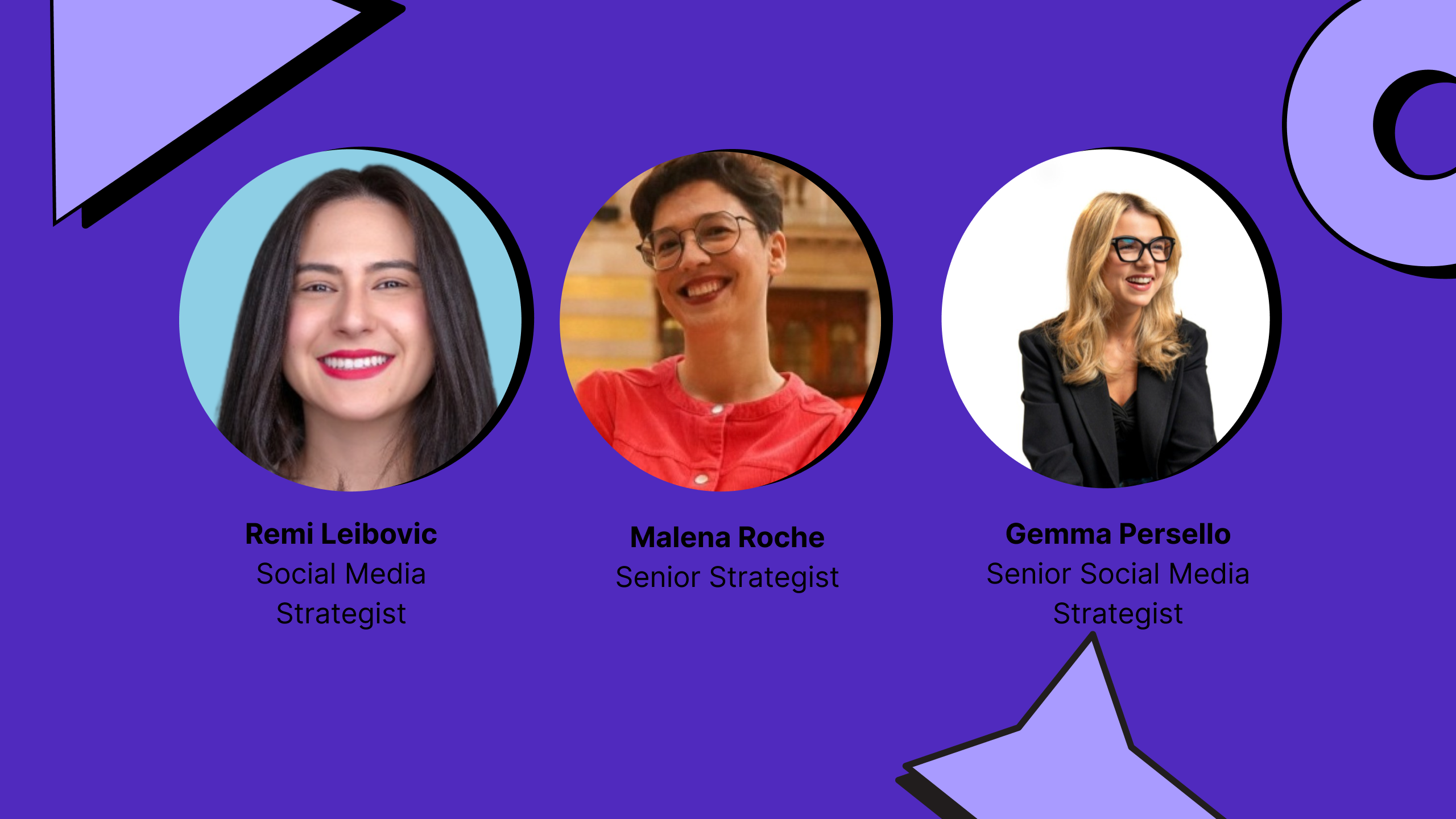
If you work in social media, you’ve probably said one of two things: “I need to figure out how to use AI for social media marketing” or “Should I even be using AI?”
I get it. As a writer, I’ve come up with a hundred excuses not to. Maybe you don’t trust it. Maybe you think it lacks context. Or maybe you’re just tired of hearing about it.
But here’s the thing: AI isn’t going anywhere.
The smartest social media teams are already using the best social media AI tools to do more of what they love (creating, strategizing, and storytelling) while AI handles the grunt work. If you ignore it, you just spend more time stuck in messy spreadsheets and long reports.
To see how AI actually fits into social media analysis, I caught up with our team at Socialinsider and learned from three experts in our recent webinar, “How AI Helps Social Leaders Analyze Data Faster.”
Here’s a little about these experts:
- Remi Leibovic, fractional social media director at RCL Media LLC
- Malena Roche, senior strategy and insights consultant at Battenhall
- Gemma Persello, senior social media strategist at Magnetic Creative
Let’s break down their insights after understanding what AI in social media analysis means.
Key takeaways
-
What is AI in social media analysis? AI in social media analysis uses machine learning and automation to turn massive amounts of social data into clear, actionable insights about performance, sentiment, and trends.
-
How to use AI for social media analytics: Real-world applications and use cases: From automated content categorization to trend forecasting and competitor benchmarking, AI helps social teams analyze data faster and make smarter, data-backed decisions.
-
Common challenges when adopting AI for social media analytics: The biggest hurdles—like accuracy, context blindness, control, and privacy—can be overcome by keeping humans in the loop and choosing transparent, customizable AI tools.
-
Future of AI in social media analysis: As AI becomes more advanced, it will handle complex analysis tasks automatically, freeing marketers to focus on creativity, storytelling, and strategic thinking.
What is AI in social media analysis?
AI in social media analysis refers to the use of artificial intelligence technologies (machine learning, natural language processing (NLP), and computer vision) to automatically collect, interpret, and generate insights from social media data.
These systems can analyze millions of posts, comments, images, and videos to detect sentiment, identify patterns, and uncover what’s driving engagement across platforms.
For example, you can use AI-based social analytics tools like Socialinsider to analyze competitors’ social media pages, compare engagement, reach, and post performance.
Gemma, social media strategist, talks about how she uses AI in her workflow —
For me, it’s really about finding the outliers, what’s performing above average and what’s below average, and then spotting patterns to understand why. Sometimes a post might go viral because it tapped into a meme or trend we didn’t plan for. Other times, we might notice over several months that recipe videos on Instagram consistently perform best.
So it’s about identifying both short-term spikes and long-term trends that we can replicate for success. What excites me is how AI can take this further: automatically monitoring performance, spotting those spikes in real time, and even sending alerts when benchmarks are hit or exceeded. That way, we spend less time manually reviewing and more time acting on insights.
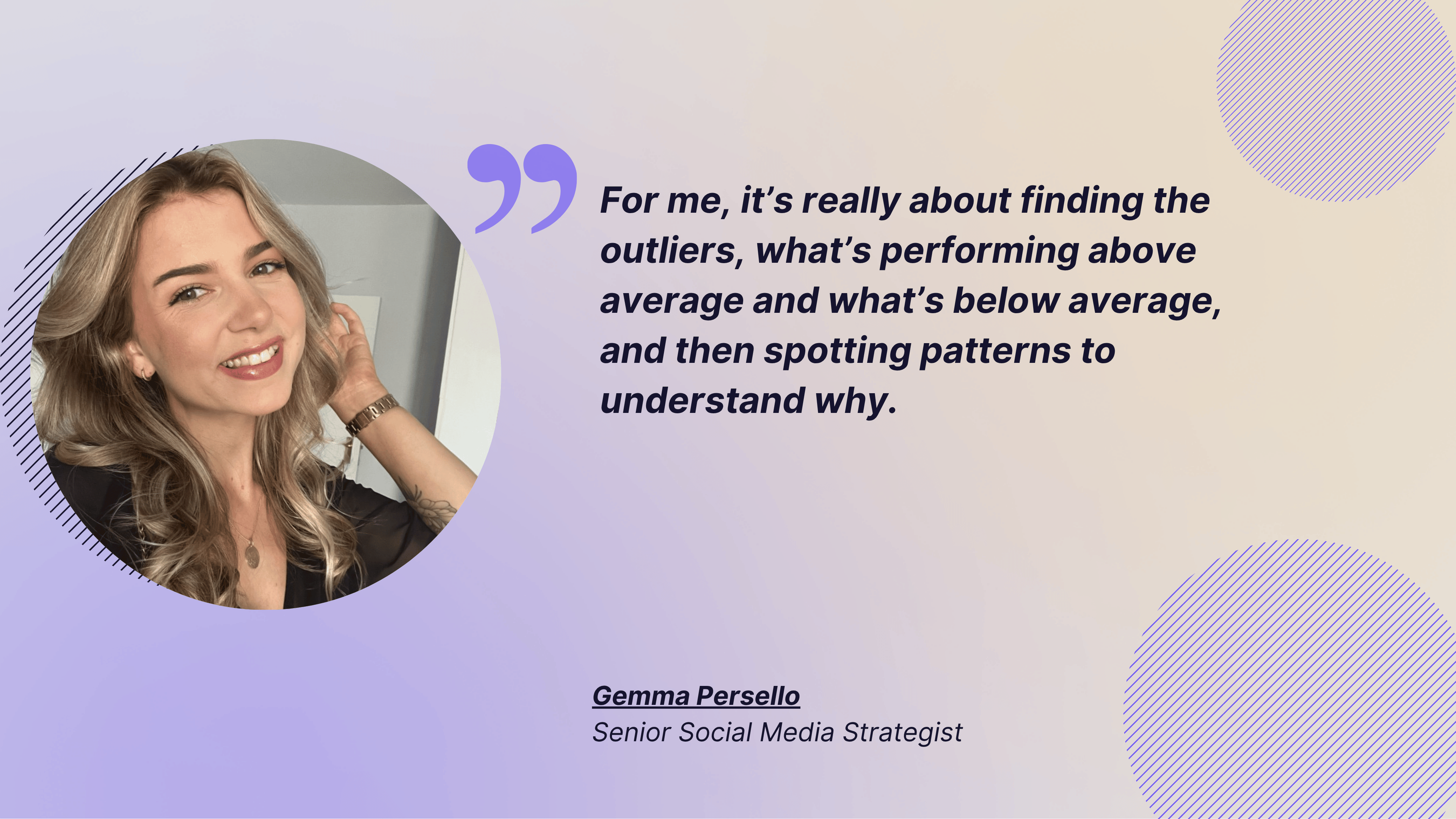
What are the benefits of using AI for social media analysis?
If you’re still on the fence about implementing AI, here are five benefits of AI in social media to change your mind.
Get real-time insights and alerts
You don’t want to miss out on the virality of the Instagram Reel you posted last night. Thankfully, AI doesn’t sleep. With real-time insights and alerts, it constantly monitors your brand mentions, engagement spikes, and sentiment shifts across platforms. The moment something starts trending (or crashing), you’ll know.
That means you can jump in fast. Boost that viral Reel, repurpose it across platforms, or drop follow-up content while the hype’s still hot.
Work on deeper audience understanding and personalization
This is my favorite benefit of using AI in social media analytics. We all know audiences are everything on social media. And AI helps me really get under the skin of my audience. It spots patterns I’d take time catching up on: what they love, when they engage, and even how they feel.
Instead of guessing, I can personalize content that actually clicks. For example, if AI shows my followers binge wellness Reels on Sunday nights, I’ll drop my next post right then.
Have increased accuracy and consistency
Wait a minute, before you roll your eyes at this, AI has come a long way. While it still needs human review, you can now train it to avoid mistakes and errors that it made earlier. For example, AI can analyze data without elements like human bias or fatigue getting into the picture.
Confidently share data and metrics with top management
Picture this: you’ve got a meeting in ten minutes and need fresh numbers, fast. With AI, that’s easy. It pulls reliable, up-to-date data from all your social channels and turns it into clean, ready-to-share reports in minutes.
The best part? It turns this data into visuals your top management can easily understand within seconds. No more scrambling through spreadsheets and design tools for that.
Save time and resources
This is one of the key reasons why a lot of social media managers use AI. You don’t want to stay stuck in tasks that AI can easily automate for you.
Remi, fractional social media director, talked about the same in our webinar:
We have seen AI being a real game changer for time savings. Tools like Otter AI help with meeting summaries, while Canva, Filmora, and Opus AI cut down content editing times dramatically.
With so many clients needing Reels, flashy content, and educational pieces, these tools allow us to deliver faster without compromising quality. I really encourage teams to embrace AI. Because when you know how to leverage these tools, you not only save hours of work but also increase the value you bring to your clients.
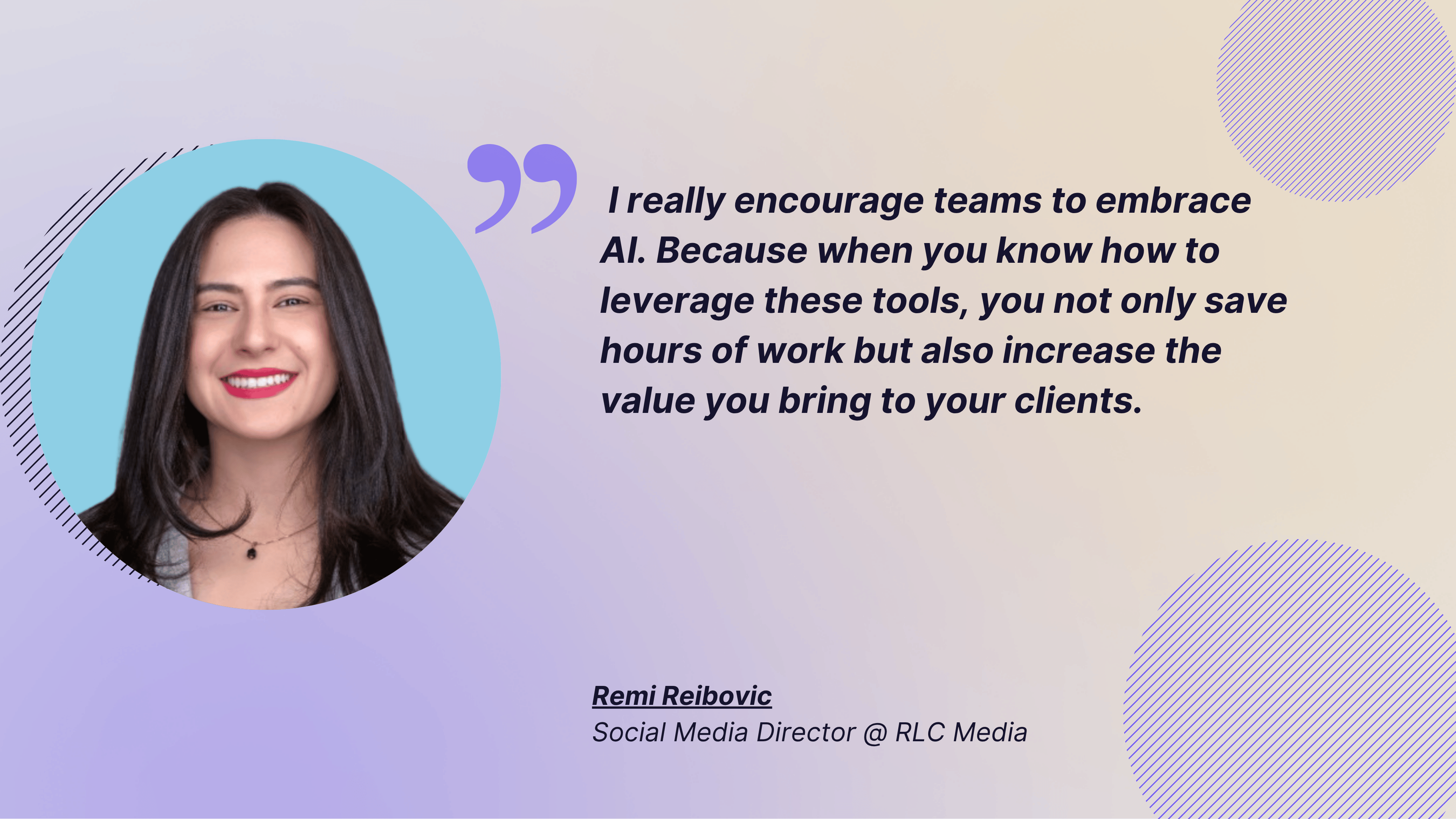
How to use AI for social media analytics: Real-world applications and use cases
Below, you’ll find the best ways to use AI for analytics as recommended by our experts and teammates at Socialinsider.
1. Automated content categorization
Imagine being served your favorite food every single day. You’d soon get bored with it. The same is true for social media. Even if humor works well, you need to complement it with other themes like product education or customer stories.
But how do you check each theme’s engagement when you work with so many themes? Manually sorting through hundreds of posts to see what’s working (and what’s not) can eat up hours. That’s where AI social media analytics step in to do the heavy lifting.
Socialinsider’s AI-generated content pillars feature automatically analyzes post captions and other metadata to group content into ‘content pillars’ or categories (for example, industry news, testimonials, product launches). You instantly see what types of content dominate your feed and which ones drive the most engagement.
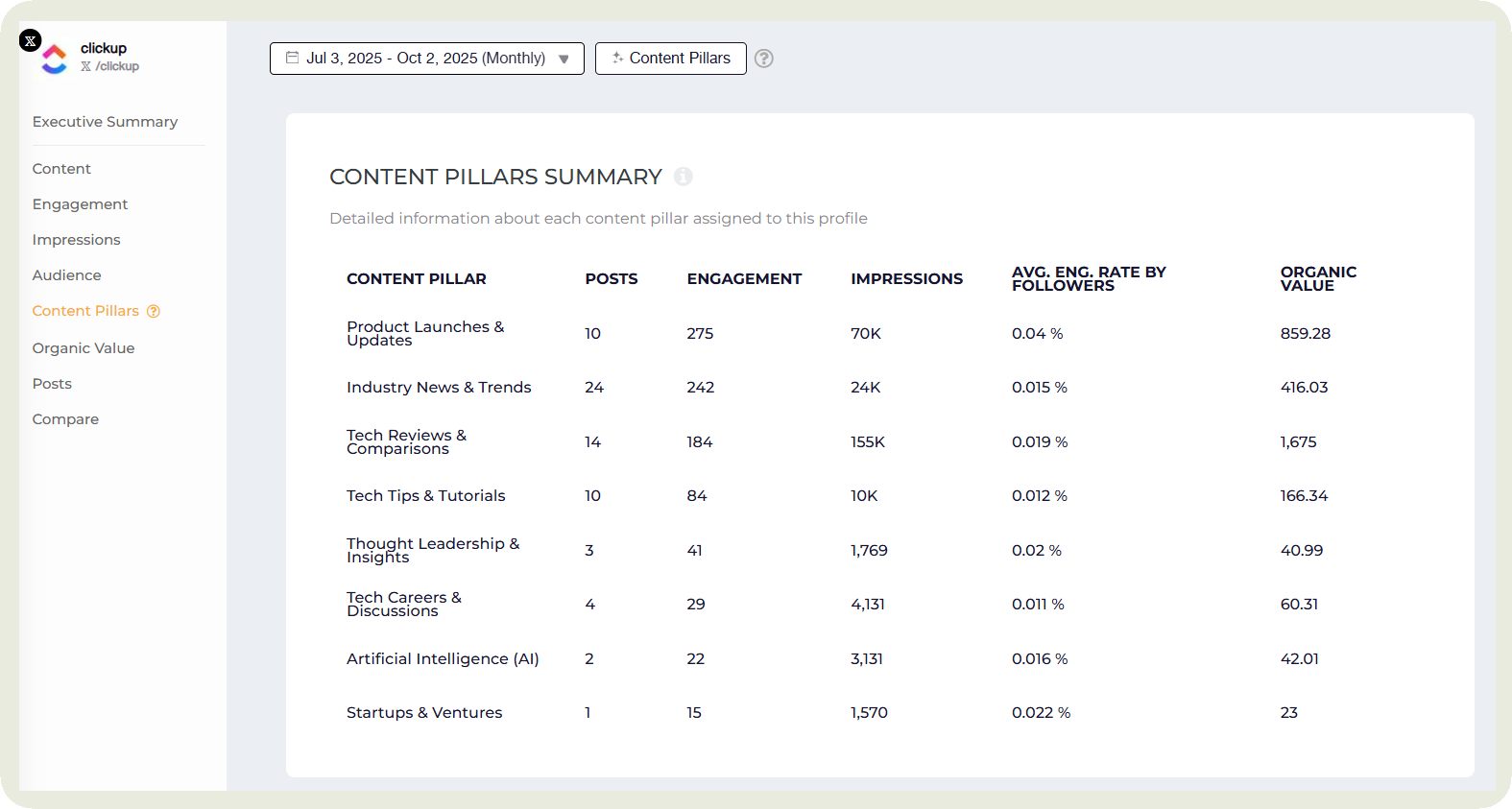
How does it help?
- See what percentage of posts belong to each pillar and adjust your content mix accordingly.
- Identify which categories deliver the most engagement, so you know what to double down on.
- Spot gaps or overused themes to keep your social media strategy fresh and diverse.
- Benchmark against competitors to uncover missed opportunities or overplayed topics.
Our team also loves customizing pillars — manually tagging posts and creating new categories.
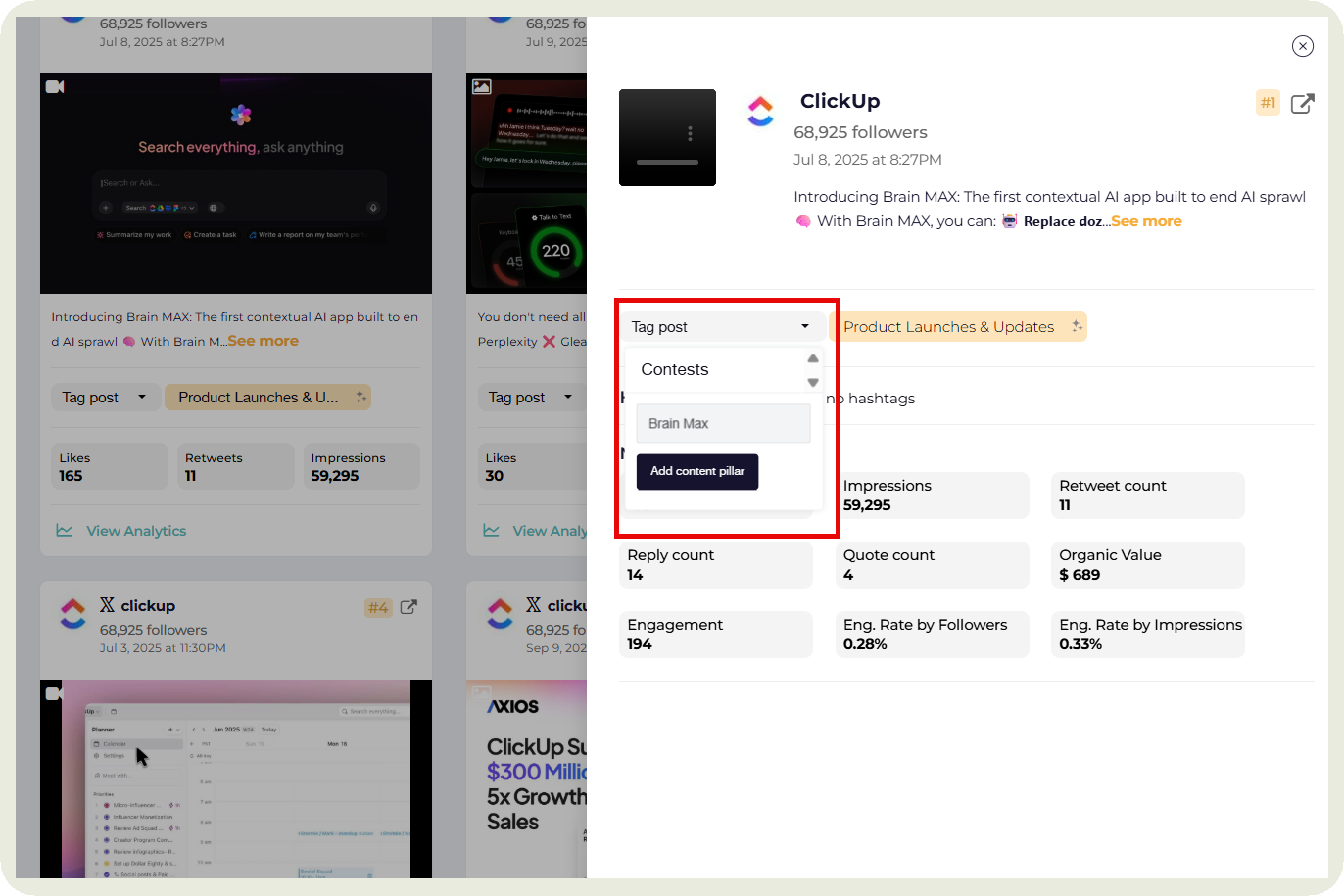
Here’s what one of our current customers said about this feature during the demo:
I really like the AI-generated content pillars feature because we currently sort content pillars manually, and it takes a lot of time. If AI can do that for us, we can focus on adding deeper insights instead of spending hours categorizing posts. It would save us so much time.
2. Trend forecasting and viral content detection
You don’t want to create content around fads. At the same time, you don’t want to miss out on valuable trends that won’t die soon.
Sure, you could scroll endlessly through TikTok or Instagram trying to spot what’s next or you could let social media AI do its magic.
You can use AI-powered trend forecasting tools that scan massive amounts of social media data (hashtags, posts, videos, keywords, memes, and even visual elements) to identify what’s gaining traction before it goes mainstream.
They also track how a trend evolves over time, so you know when to jump in and when to step back. For example, you can enter a keyword like ‘morning skincare routine’ and instantly see if it’s on the rise, peaking, or fading out.
This is especially helpful for social media strategists who work with brands that capitalize on every trend in their niche.
Another way I keep track of new trends is to go to ChatGPT and ask it for a summary of trending topics this week. The best part is I can ask the tool follow-up questions like why it’s trending and how I can capitalize on it for my brand.
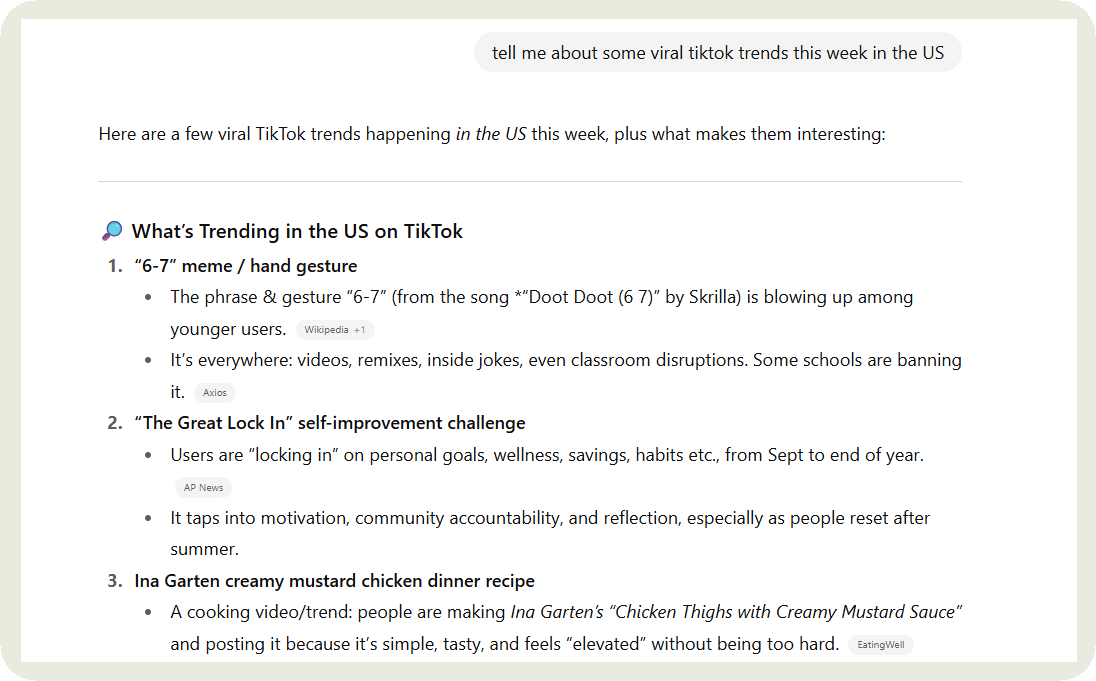
3. Social listening for sentiment analysis
How do users feel about your brand? What is the common customer sentiment around your content?
Social media AI tools with sentiment analysis help answer these questions.
For example, if your brand gets 5,000 mentions on Twitter in a week, sentiment analysis tools can instantly show you:
- What percentage of those mentions are positive or negative
- Why sentiment changed (a product launch, customer complaint, or viral post)
- Which topics or campaigns are driving the strongest reactions
These tools also help detect sentiment shifts over time to see if your brand image is still running as strong, or you need to make changes in your content strategy/tone to correct the negative sentiment.
Malena, senior strategy and insights consultant, talked about using AI to verify what these tools show you. Here’s what her process looks like —
I’ve found AI really useful within social listening, particularly for sentiment analysis. I never rely on the sentiment from platforms that collect the data as it’s not very accurate. Previously, I’d export a sample to Excel, randomize and code it manually, then use that as the sentiment. Now I can download the data, feed it to ChatGPT, and have it code for me. What’s great is that it can do aspect-based sentiment analysis.
For example, with a sentence like ‘I don’t like wearing athleisure, but I like Adidas Farm Rio,’ most platforms would tag it as negative. But I can tell ChatGPT to focus on the aspect: negative for athleisure, positive for Farm Rio. That’s something I always had to do manually for more complex sentences, and now AI saves me tons of time. I still double-check and ask for examples, and if it gets something wrong, I’ll correct it, but even with that back-and-forth, it’s much faster than manual coding.
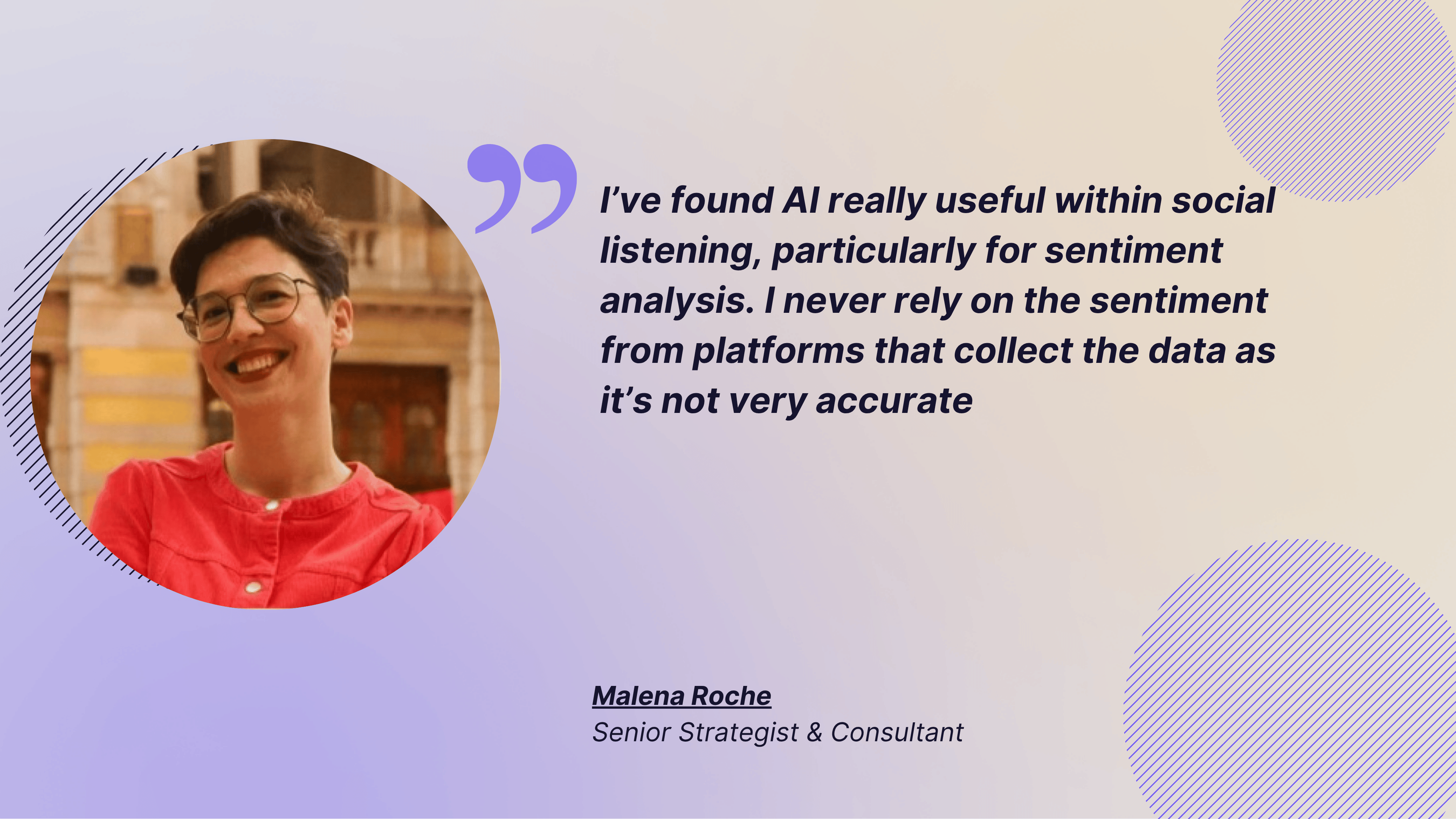
4. Advanced audience segmentation and targeting for paid ads
Sure, most of us already run paid ads targeting basic demographics like age, gender, or location. But what if you could go beyond that and target people based on their behavior, interests, sentiment, and how they actually interact with your content?
That’s exactly what AI makes possible. Meta’s advanced AI features take audience targeting to the next level.
Say you’re running a paid campaign for a new eco-friendly skincare line. Instead of just selecting ‘women, ages 20-40, interested in beauty,' Meta’s AI can go deeper. It analyzes who’s clicked similar ads, who engages with sustainable brands, who watches skincare tutorials all the way through, and who makes purchases after viewing an ad. Based on that, it automatically creates Lookalike Audiences.
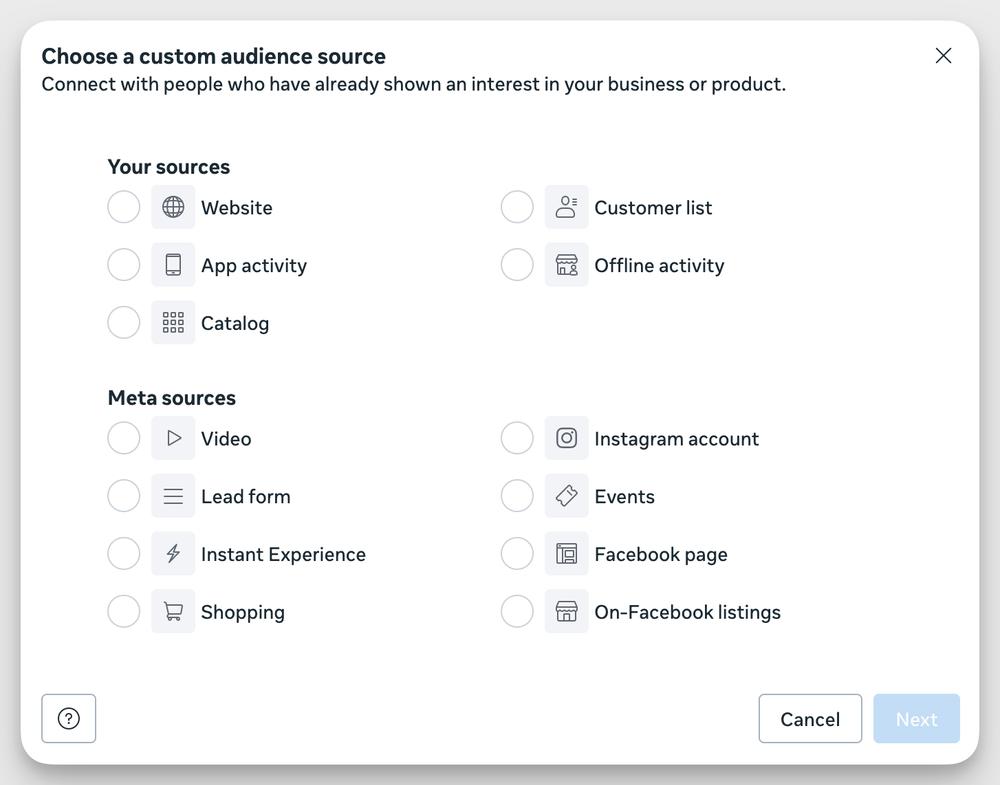
Here are three additional features I like that Meta offers:
- Meta’s ‘Advantage+’ suite that automates targeting, placements, creative combinations, and budget allocation to maximize performance. For example, you upload assets and budget, and AI figures out which ad-audience mix converts best.
- Meta’s Andromeda engine which uses advanced neural networks and hardware to help optimize ROAS (Return on Ad Spend) by making better predictions of which users are likely to convert.
- Meta gives an opportunity score for campaigns (0-100) with AI-powered recommendations for quick tweaks.
5. Competitor analysis and benchmarking
Your Instagram engagement has grown by 30% in the last year. That’s great. But what if your competitor has managed to achieve double that engagement with the same number of followers?
The truth is, you won’t even know about it unless you use AI.
Tools like Socialinsider use AI to get metrics like engagement, follower growth rate, and post performance so you can compare your growth with competitors.
Here’s how the benchmarking looks like in our tool.
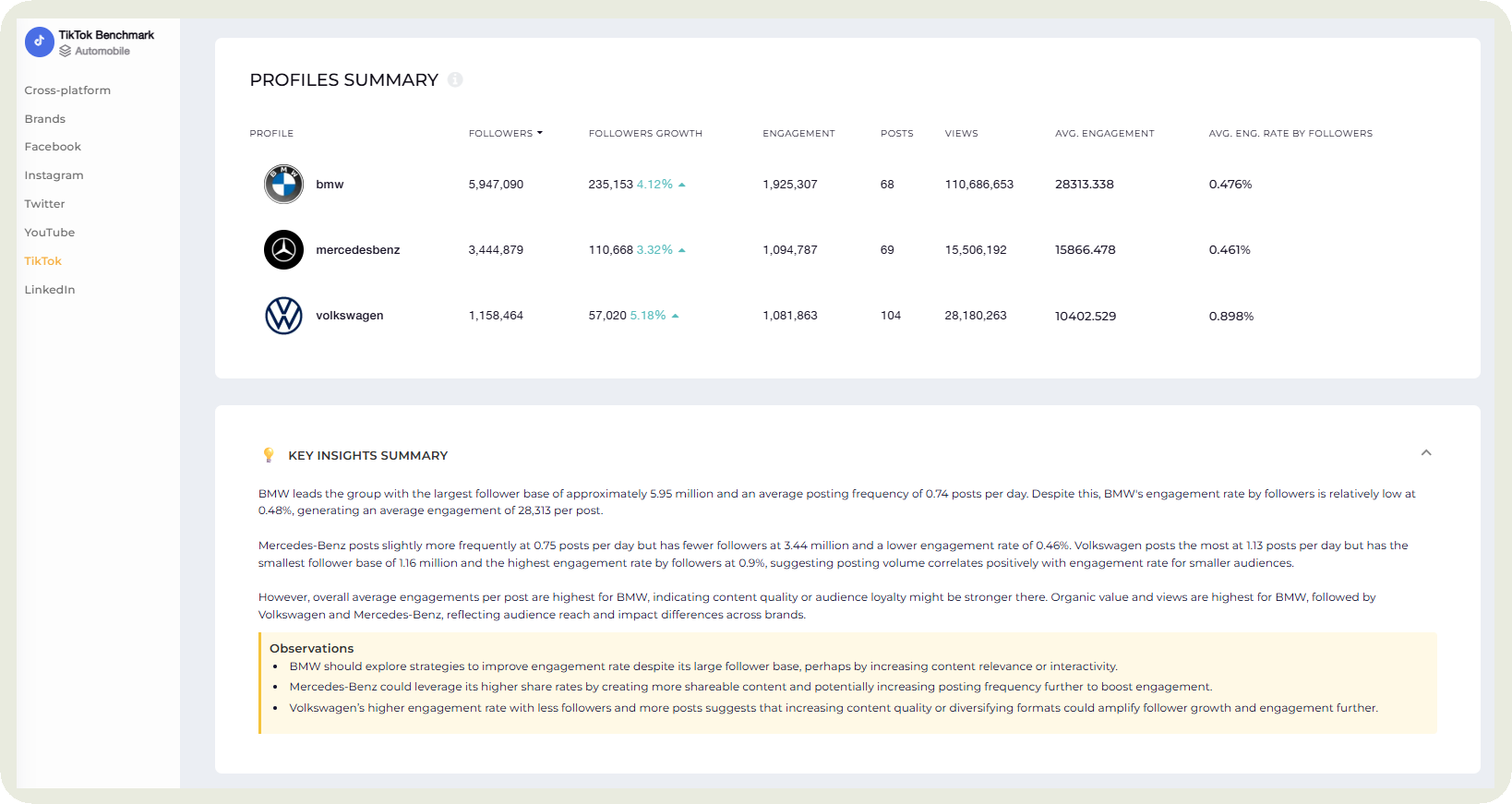
I can customize this dashboard to see a side-by-side comparison of all these profiles on metrics of my choice.
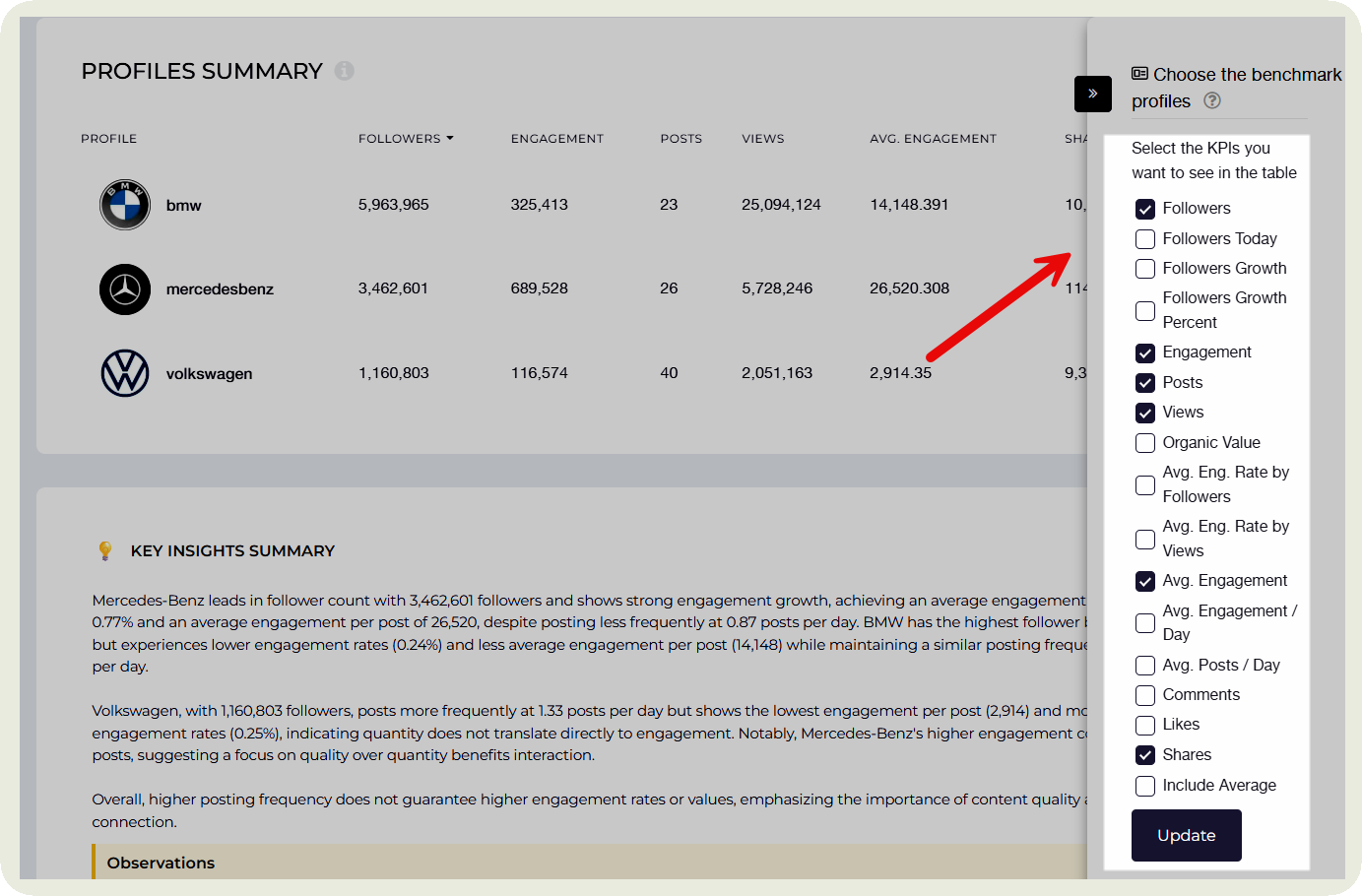
The best part is AI also helps me study individual competitor profiles and look at metrics like engagement rate by followers, content type distribution, content pillar mix, top and bottom performing content, and individual post metrics.
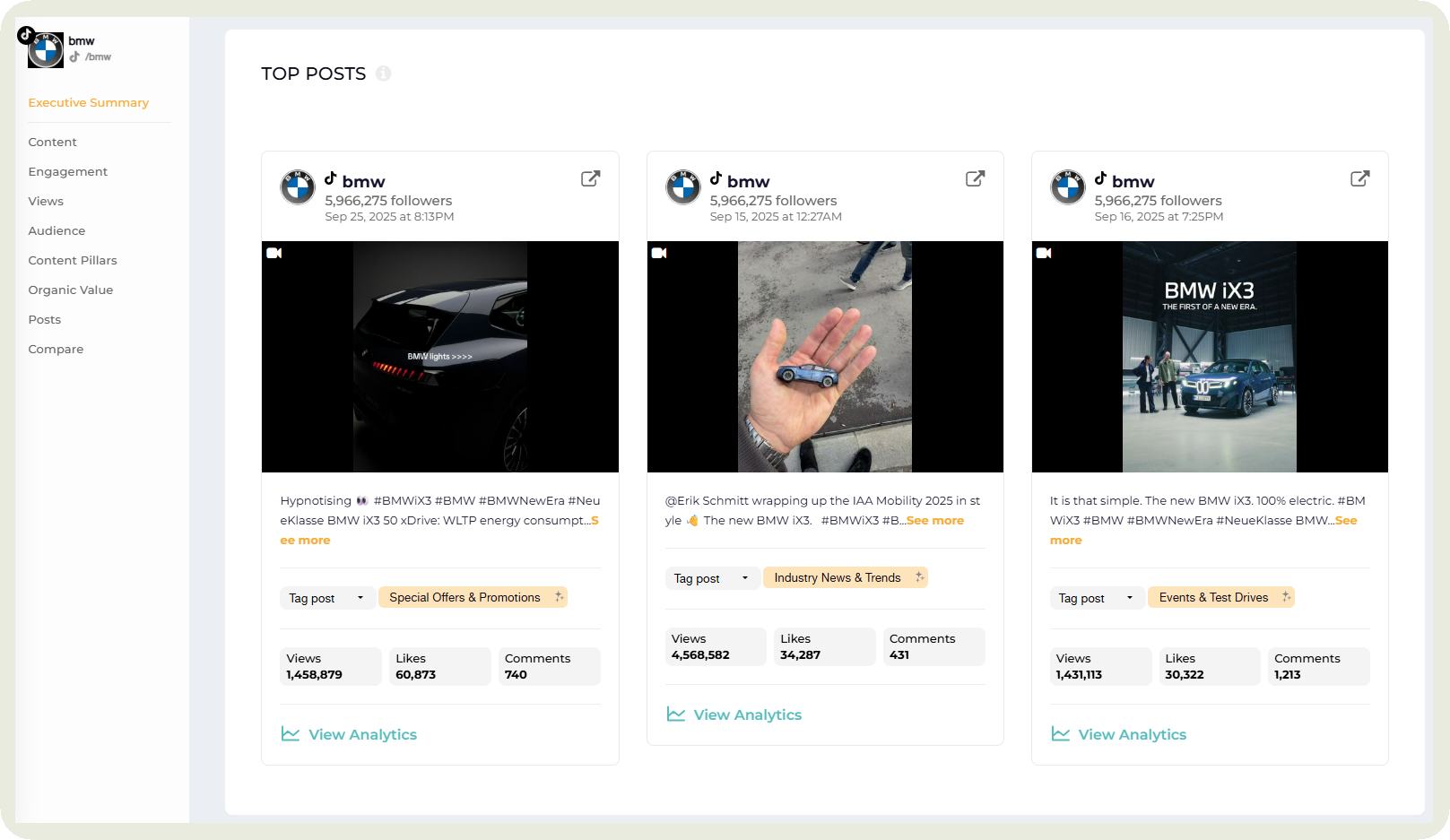
How do I use this?
- Identify which competitors are outperforming me and dig into why. Is it their posting frequency, tone, or content type?
- See which content pillars or formats drive the most engagement for competitors and adapt mix accordingly.
- Spot seasonal spikes or campaign boosts in competitors’ performance to fine-tune my own posting schedule.
- Benchmark my engagement rate, follower growth, and content output against the industry average to set realistic goals.
- Back my strategy with data-driven proof when presenting to clients or management.
Related read: Top 11 competitor analysis tools on the market
6. Cross-platform analytics integration
Tired of hopping between Instagram Insights, X analytics, LinkedIn reports, and a dozen open tabs?
AI-powered cross-platform analytics brings all that chaos into one clean, unified view. It pulls data from every major platform, stitches it together, and highlights what actually matters.
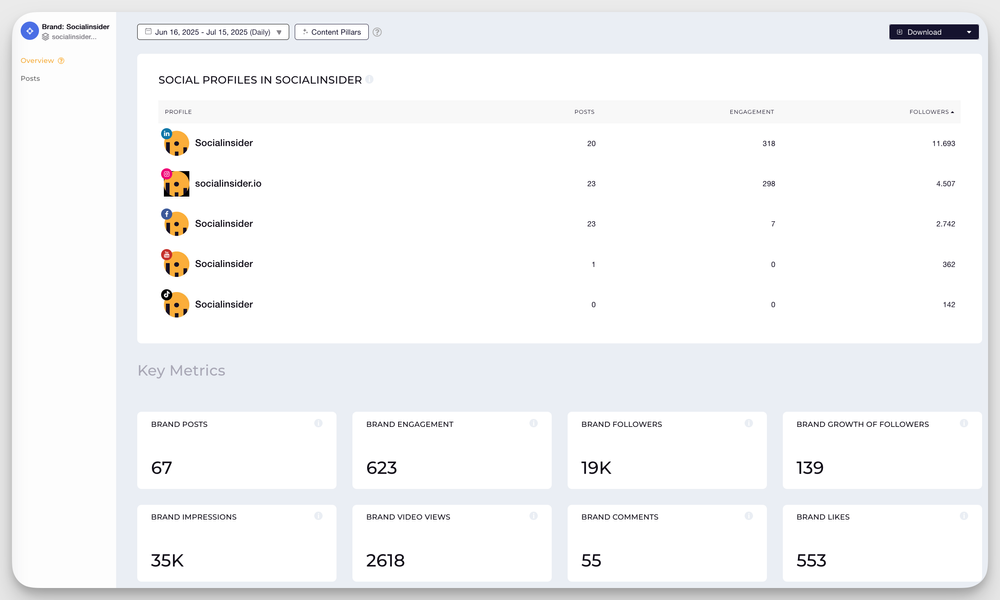
Instead of analyzing each channel in isolation, you can finally see the bigger picture: how content performs across platforms, which channels drive the most engagement, and where your audience overlaps.
You can also spot content patterns more easily. Maybe your educational posts crush it on LinkedIn but fall flat on TikTok. Or your Reels drive massive reach on Instagram, while similar videos barely move the needle on YouTube. With AI, you can see all that in one place and fine-tune your strategy accordingly.
8. Automated reporting and executive summaries
Still blocking two hours every week just to gather data and build reports? You’re not alone, especially if you’re juggling multiple clients or need to update management regularly.
That’s where AI steps in to save your time (and your sanity).
Here’s how in Socialinsider:
- AI considers all your current metrics and data and recommends what to do next. Socialinsider provides these steps in the Key Insights Summary section.
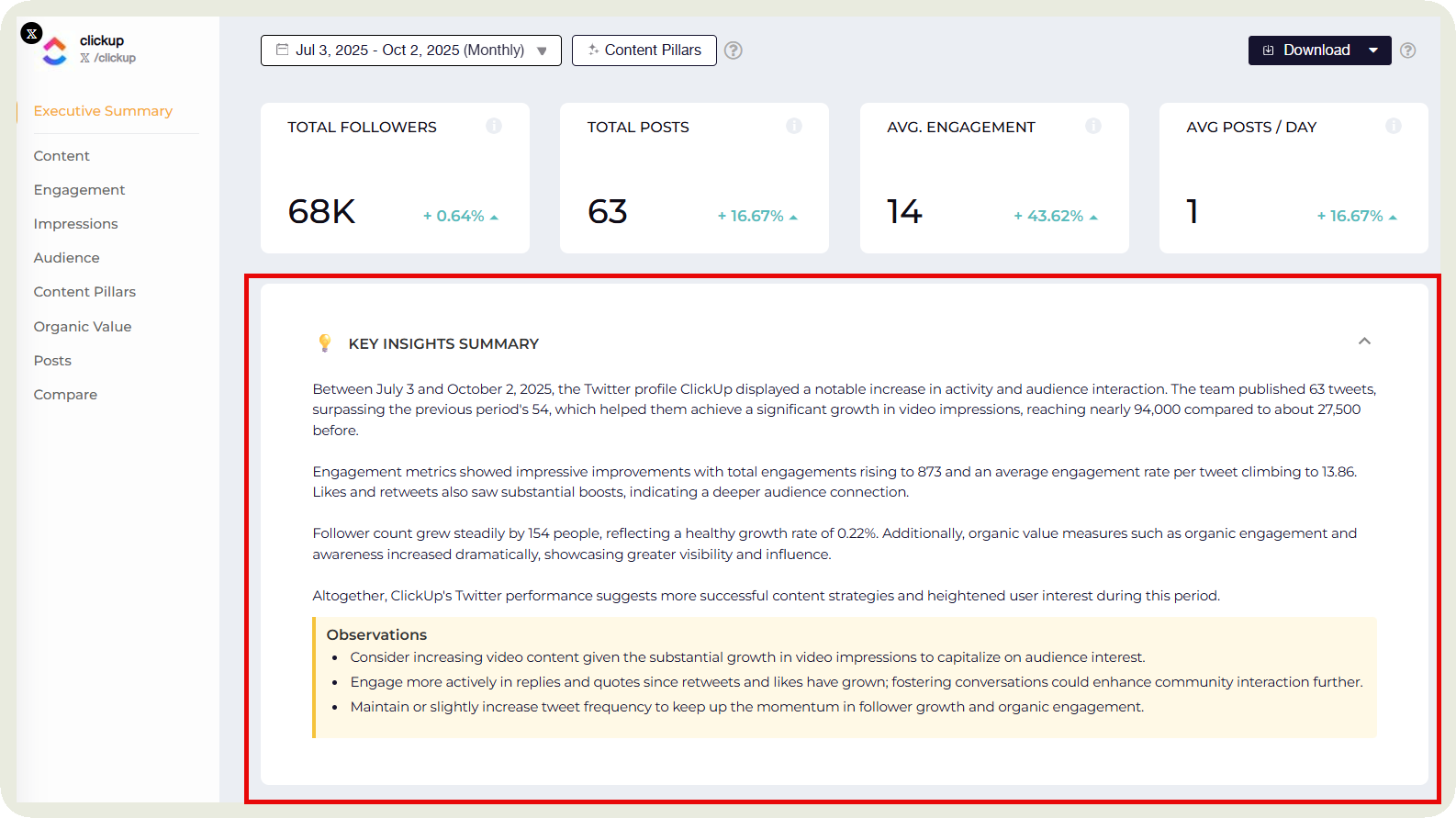
If you’re benchmarking against competitors, you’ll find the same summary section for competitor analysis too. This helps with quick analysis and reporting.
- Schedule autoreports so you don’t have to create presentations or reports from scratch. You can schedule it to get the reports daily, weekly, monthly, or quarterly.
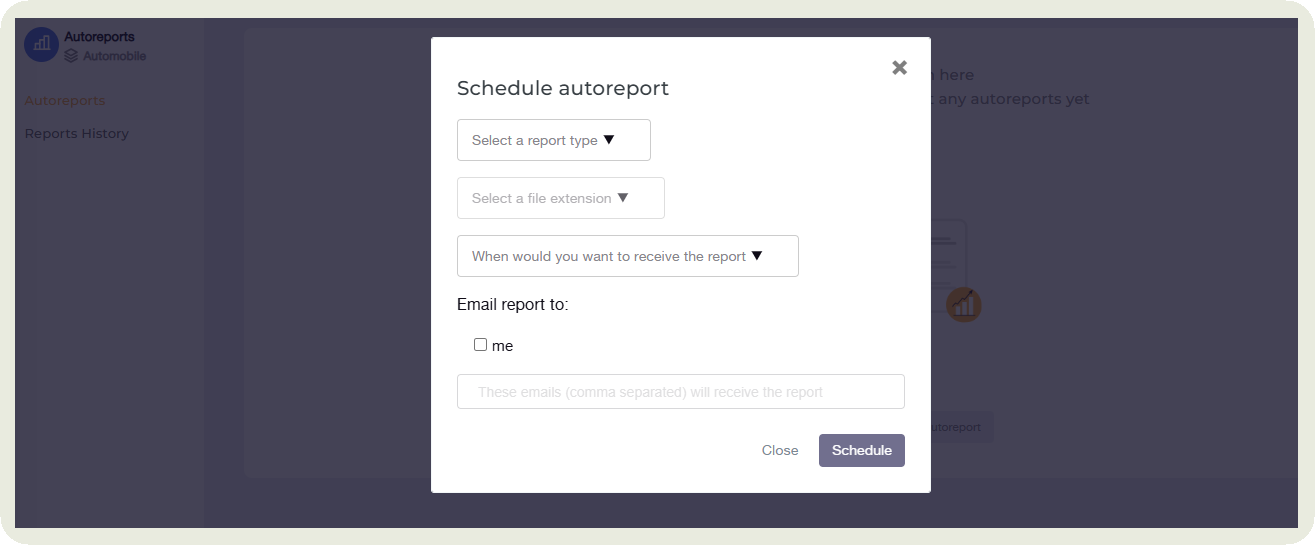
Common challenges when adopting AI for social media analytics
Even with AI streamlining so much of social media work, many marketers still run into a few bumps along the way. We often hear customers mention these common roadblocks. So here are four of the biggest ones and how to overcome each.
Trusting the accuracy and reliability of AI results
“How genuine is the data I get from AI?”
“What if I make decisions based on AI, but it takes the wrong data into consideration?”
I get it. I was facing these thoughts too when adopting AI. Here’s how I dealt with this challenge:
- Cross-check insights with native platform analytics (like Meta, LinkedIn, or TikTok dashboards) to confirm accuracy.
- Set consistency checks in your reports to spot outliers or sudden metric shifts that may indicate an AI error.
- Keep a human in the loop. Review AI findings before presenting or acting on them.
Malena recommended training AI and refining it so it doesn’t repeat the same mistakes. She said:
I’d say don’t fully trust AI. Always second-guess it, question the outputs, and dig deeper. Because that’s how it learns. The more you challenge it and refine its use, the better and more accurate it becomes over time.
Dealing with context blindness
AI is great at spotting patterns, but not always at understanding them. It might misread sarcasm, miss cultural nuance, or take a trending meme too literally.
To fix that, train AI tools with brand-specific examples, campaigns, and tone of voice so they better grasp your context over time.
Remi suggested the same —
“The challenge with AI is that it often has context blindness; it doesn’t naturally understand the nuances of your audience. But if you train a model like ChatGPT on your client’s language and needs, it starts to bridge that gap. So the output isn’t generic, it’s tailored to exactly who you’re talking to.”
You can even localize analysis by including regional slang, cultural cues, or platform-specific context in your datasets.
Having control and customization
Many social media professionals are concerned about losing control over social media data and how it is categorized.
For example, in our content pillar analysis feature, we use AI to categorize content into different themes. But we also offer users the option to manually tag posts and create their own categories.
I suggest looking for tools that allow you to do both — use their AI features but customize them to fit your exact requirements.
Navigating privacy and ethical considerations
You don’t want to cross ethical (and legal) lines by collecting or analyzing user information without consent.
To stay compliant and trustworthy, work with tools that clearly outline how data is sourced, processed, and anonymized.
If you are sourcing data yourself, use only publicly available or consented data. Avoid scraping private profiles or personal messages.
Future of AI in social media analysis
What we never dreamed technology could do is handled by AI today. And the best part? It’s still nascent and growing better, efficient, and smarter.
Malena envisions a future where AI will be able to categorize content with very specific directions. She says,
What excites me about AI is the potential to spend more time on the fun parts of the job: the strategy, the creativity, the big-picture thinking, while it handles the repetitive, time-consuming tasks like tagging.
Right now, most social media tools still require a lot of manual tagging, and that slows things down. I look forward to a future where I can just give precise instructions, AI handles the tagging automatically, and the data is already segmented the way I need it. That means I can focus less on cleaning and preparing data, and more on spotting patterns, shaping the narrative, and doing the real thinking.
Together, these perspectives show that the future of AI in social media is bigger than we ever imagined. To stay ahead, keep an eye on Socialinsider. We’re working on something exciting. Sneak peek: Socialinsider AI focused on conversational insights, where you will have an interface to ask questions based on the data within a project.
Try Socialinsider today.
Final thoughts
All in all, AI isn’t here to replace social media professionals — it’s here to empower them. By automating the repetitive work and surfacing insights faster, AI lets you focus on what really matters: creativity, strategy, and storytelling.
The key is to use it thoughtfully — question its outputs, train it on your brand’s context, and let it amplify your expertise. As AI continues to evolve, the social teams that embrace it early will be the ones setting new standards for data-driven creativity.
Analyze your competitors in seconds
Track & analyze your competitors and get top social media metrics and more!
You might also like
Improve your social media strategy with Socialinsider!
Use in-depth data to measure your social accounts’ performance, analyze competitors, and gain insights to improve your strategy.

